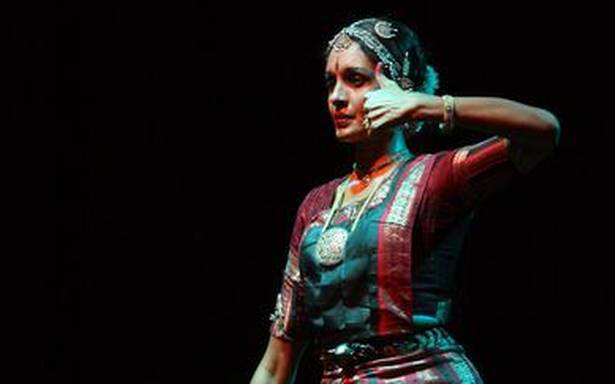At an online event, Priyadarsini Govind showed how the face can be turned into a canvas of emotions
Priyadarsini Govind’s ‘Rama Navarasa’ was a restrained and dignified presentation. It stayed in the mind long after the online session was over. In Sri Rama Karnamrtam, the poet describes how Rama experienced Sringara when he saw Sita, felt valorous when he broke the bow, was surprised when the monkeys built the bridge, and angry over Ravana’s evil deeds. Priyadarsini brought out all these emotions clearly, communicating more through her eyes. Priyadarsini, dressed in a grey Kanjeevaram sari, did the abhinaya sequences seated on the floor and with masterly understatement. One could understand and experience Rama at every point. This is what good art is all about — getting the perspective right.
The webinar series on Navarasa was conducted for members of NavaDarshana. With her thorough approach and refined technique, the senior dancer took the participants through the theory of communication.
Rasa in the audience is created through Vibhava (determinants), Anubhava (voluntary responses) and Vyabhichari Bhava (transitory emotions such as stories, etc) — tools of abhinaya used to communicate the sthayi bhava of the composition. An experienced dancer will go beyond the theory to understand a composition and interpret it. Priyadarsini says that a dancer not only expresses but also experiences rasa within.
Expressing it right
What we think we are expressing may not always be so, as what we think may be different from what we express. Since Bharatanatyam uses a stylised, perhaps even exaggerated, vocabulary of expressions, this is an important point to remember. To highlight another interesting point that we perhaps know intuitively is that what is expressed may be different from what is received, which is the difference between the sthayi bhava and the rasa. Priyadarsini gave an example from the Purananooru, the Sangam poems that speak of kings and warriors. The warrior community sends their children to the battle — veera is the sthayi bhava here, but what the audience experiences is shoka (sadness). Or how sometimes an artiste may do something funny or humorous, but it may invoke shoka in the audience, as Kamal Haasan does in the film Sadma.
She repeatedly pointed out that the sthayi bhava should not be seen in isolation and is not generic; it needs shading, with reference to the situation, character, and other factors to add fullness and depth. This is how an artiste builds up the blank canvas of the stage.
The dancer demonstrated a few songs, mainly the pallavis, to show how an idea can be conveyed in different ways. ‘Yaarukkagilum bhayama’ is about a woman who is not arrogant but not afraid to be open about her relationship with the king. There was more reticence in ‘Sakhi he,’ where the heroine tells her friend how much she loves Krishna, and an overflowing vatsalya bhava in ‘Thumaka chalata Ramachandra’ between a mother and her son. Thanks to the virtual medium, one could get a clearer view of her nuanced expressions.
The crowning glory of Priyadarsini’s presentation was the Rama navarasa sloka, ‘Shringaram kshiti nandini’ from the Sri Rama Karnamrtam, sung by Rithvik Raja in an evocative ragamalika. Her emotions were contained, befitting Rama. Her abhinaya was like a seamless narrative, creating visual poetry.
The Chennai-based author writes on classical dance.
Source: Read Full Article

